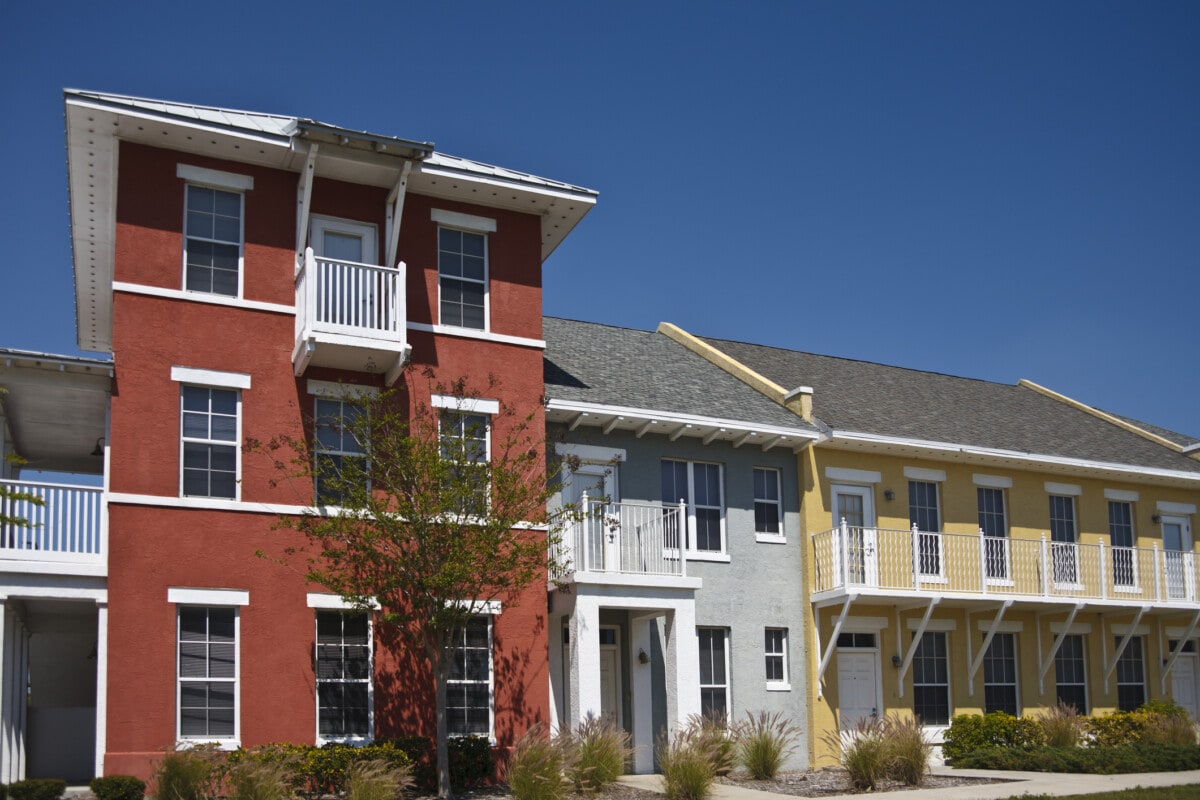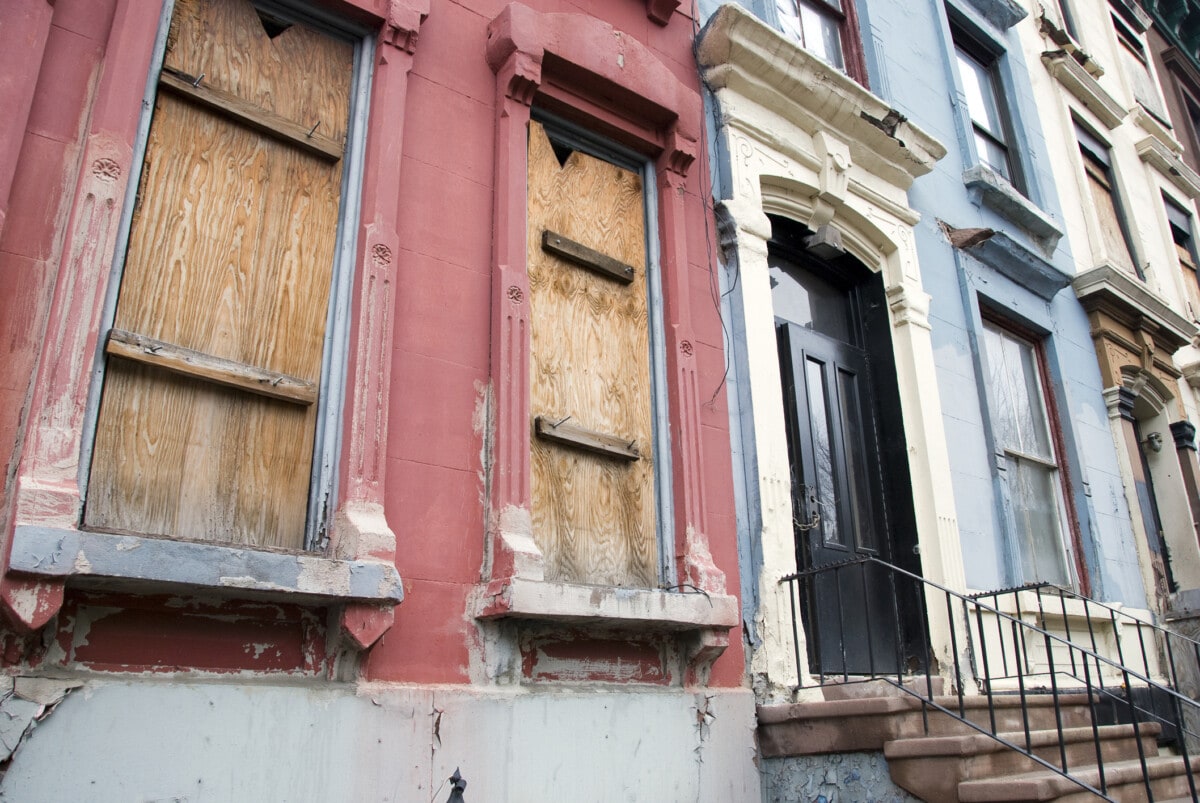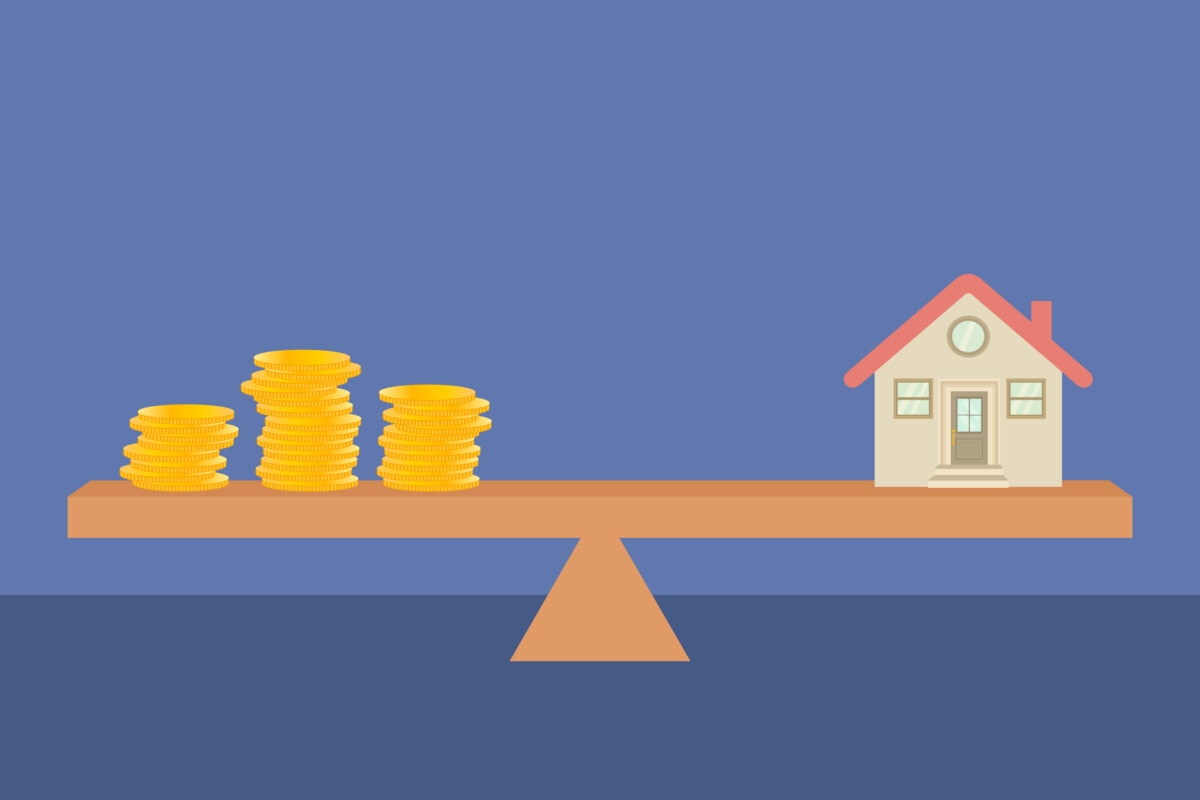If you’re struggling to afford a home, you’re not alone. In the past five years, home prices have risen by over 60% due to increased demand and a shortage of homes. Rent prices have also increased dramatically year over year — an average of over 8% since 1980 — and recently increased by 20% in 2021. Rising costs of housing combined with high inflation rates have placed a large financial burden for many people. In 2020, 46% of all households had unaffordable rent or mortgage payments, meaning they spent more than 30% of their income on housing.
If you’re looking for an affordable home or just want to learn more, this article is for you. We’ll dive into affordable housing so you can stay informed and find resources you need. Read on to learn about affordable housing, including definitions, history, and how the government manages dozens of policies and programs.

What is affordable housing?
Affordable housing is housing that people can afford for 30% of their income or less, although this definition may be outdated as most people actually spend about 32% of their income on housing. Affordable housing is also colloquially used to refer to specific housing assistance programs.
In the US, there are two primary affordable housing programs: public housing and subsidized housing. Low-income housing is another common term that generally falls under the public housing umbrella, although some governments differentiate them.
Unfortunately, the need for affordable housing is far greater than the number of available homes. For example, the waitlist for a subsidized one-bedroom apartment in King County, WA, is over five years long, meaning many people end up with housing insecurity.
Why affordable housing matters
The majority of people who live in affordable housing are from underrepresented communities, including women with children, immigrants, people of color, the elderly, and people with disabilities. People from all walks of life utilize affordable housing. And, as housing prices continue to outpace wages, many middle-income individuals and families also need assistance in expensive coastal metros.
How does affordable housing help?
Affordable housing plays a crucial role by providing a stable and secure home for individuals and families, which can reduce financial stress and create a solid foundation for life.
Affordable housing programs help people transition from housing instability into affordable houses and homes. Homes must be considered safe, decent, and sanitary to qualify as housing. Individual programs and municipalities handle their housing needs differently.
The housing process generally starts with emergency homeless shelters, then moves to transitional housing, public and subsidized housing, formal renting, and can end with homeownership, although this isn’t right for everyone.

Overview of affordable housing programs
The Department of Housing and Urban Development (HUD) addresses affordable housing under two large umbrellas: public housing and subsidized housing.
Public housing is usually owned by the government, while subsidized housing relies on the private market. HUD provides funds, and individual Public Housing Authorities (PHAs) in every county (and a few territories) manage the programs and cater them to their needs. Some states use different programs as well. For example, Washington State utilizes government-sponsored, volunteer-run Public Development Authorities (PDAs) to work alongside PHAs.
Affordable housing is a complicated mishmash of dozens of definitions, laws, grants, and funds that change from city to city. Many states, cities, and counties also have unique housing laws, and some nonprofit organizations offer solutions and work with individual governments. This fragmented method makes finding affordable homes incredibly difficult, especially for unhoused people.
Who funds affordable housing programs?
HUD funds most programs through The National Housing Trust Fund and the Low-Income Housing Tax Credit. These are the primary resources for building, rehabilitating, and operating affordable rental housing.
The HOME program also offers a large amount of funding for building new rental units and permanently affordable houses. There are many federal, state, and local down payment assistance programs for homebuyers, a few of which are included in Redfin home listings.
What about homeownership?
Homeownership can create financial stability and reduce housing inequity. However, it’s not right for everyone. Publicly funded affordable homeownership opportunities are also much harder to find, which is why many nonprofits help fill in the gap.
Some programs use ‘affordable housing’ to refer to both renting and owning, which can be confusing.
To make homeownership affordable, governments and nonprofits help through down payment assistance, low-interest rate loans, first-time homebuyer programs, and property tax relief, among other ways. The HCV Homeownership Program is the primary government housing assistance fund, but it is underfunded.
Take your situation into consideration and do research before searching for affordable homeownership.

Do you qualify for affordable housing?
If you make less than 80% of your municipality’s median income, you can apply for most affordable housing programs. You may also have to complete a background check. Someone who makes less than 30% of the median income is considered extremely low-income and may receive priority. Some forms of affordable housing have different income limits.
Cities and counties determine median incomes, and they vary widely throughout the country. They also change depending on how many people live in a home. For example, if you live in a home with four people, your income limit will be higher compared to a home with two people.
Danny Michael, Founder and CEO of Satori Wealth Management, notes that “Eligibility for housing programs depends on your income, where you live, and any adjustments in income limits as required by HUD.”
How do you apply for affordable housing?
If you’re looking for affordable housing, visit your local Public Housing Authority (PHA) or nonprofit and determine if you qualify. Depending on your income, area, and living situation, you’re usually put on a waiting list. Wait times vary throughout the country, but the average is about 28 months. If you have a family, are unhoused, or currently pay more than 50% of your income toward rent, you can receive priority.

Issues facing affordable housing
Affordable housing programs are strained and often can’t serve everyone who needs help. This can make it extremely hard to find a home.
There are three main issues that affect affordable housing: funding, zoning, and availability. Let’s break these down.
Is there enough funding for affordable housing?
Federal government funding for affordable housing programs has been inconsistent for decades, generally trending downward since the 1990s. Before 2022, the only increases went to Section 8 housing programs, while the largest cuts came from public housing and related funds. However, since 2022, funding has risen across the board. Individual cities and states can set their own budgets alongside the money they receive from HUD, but that usually falls short of what’s needed.
There also aren’t enough homes to go around, as Jacob Millican from 9M Investments points out: “There has been nearly 15 years of underbuilding in single-family and multifamily homes,” he says. “With a surge in new homebuyers coming into home-buying age, this has been a perfect storm causing rising home and rental prices.”
Brian Reilly from BankBound notes that there are many down payment assistance programs that can help make homeownership more affordable. “Local financial institutions are also a great resource for buyers that need help finding the right program for their individual needs,” he says.
How does zoning impact affordable housing?
Restrictive zoning laws are a method many municipalities use to exclude low-income renters and owners from certain areas. They also play a large role in where governments choose to build affordable housing.
Historically, public housing communities were commonly built on top of older metropolitan neighborhoods. These communities were intentionally segregated, with white affordable housing communities receiving more care and maintenance than other communities. Intentional housing segregation continued until the passage of the Fair Housing Act of 1968 (as part of the Civil Rights Act). However, while overt segregation became illegal, other methods popped up, the most common being exclusionary zoning laws.
Are there enough homes for low-income renters?
There is a massive backlog of affordable housing across the country, topping 7 million in 2021. This shortage is systemic and affects every state and metropolitan area. In fact, no single county in the US meets its low-income housing needs, affecting every facet of the system, including public, subsidized, and Section 8 housing.
Another example is Section 8 vouchers. Even though Section 8 receives the most funding, vouchers routinely fall short of demand, typically by hundreds of thousands. In fact, when demand reaches a certain threshold, a PHA may permanently close its waitlist because it can’t assist people within a certain number of years.
Expert advice: property managers can be a good resource
Kathleen Richards from PM Made Easy suggests talking with a property manager. “Many property managers are at the forefront of the affordable housing crisis. They are often knowledgeable on Fair Housing laws, voucher programs, rent control, and local ordinances. It may be a good idea to rent from or talk with a verified professional property manager or management company.”

Affordable housing solutions
Affordable housing in the US is hard to find, hard to understand, and dwindling in most areas of the country. So, what are solutions to help people in need?
A well-funded, accessible, inclusive public housing program is often considered the most comprehensive long-term solution. However, in the short term, “we need more drastic measures that will incentivize developers to build more affordable housing,” says Jane Mepham, CFP® and founder of Elgon Financial Advisors.
Here are a few more steps we can take:
- Make housing a human right.
- Protect the National Housing Trust Fund: Investing in government funding helps fix uninhabitable public housing and build new developments.
- Expand financial incentives for the private market: In the short term, the private market is essential to address critical home shortages for the most vulnerable. This is not a long-term solution, as private market options can’t serve everyone.
- Fund down payment assistance programs: This can help move people from renting to owning if they desire it, closing the homeownership gap. It’s especially important for women with children, homeowners of color, immigrants, and people with disabilities.
- Pair housing support with education and other stability resources: Bad housing conditions and poor health are tied together. Education, health care, and food are key to helping people long-term.
- Evaluate and zoning laws: Zoning policies are a big reason affordable housing is inequitable and in short supply. Inclusive zoning laws are necessary to reverse systemic inequities.
- Ensure disaster recovery efforts are equitable and fair: Many public homes are at an increased risk of natural disasters and are not equipped with adequate protection from the weather. For example, “if you’re a Florida homeowner with limited financial resources, a hurricane or tropical storm can be impossible to recover from,” says Steven Venook from Advocate Claims Public Adjusters. “A disaster claim may determine if you can afford to stay in your home.” Climate upgrades are a part of HUD’s 2022 budget, but additional investments are necessary.
Final thoughts on affordable housing
Affordable housing is housing that people can afford without spending more than 30% of their income. The term also refers to government housing assistance programs, the two largest of which are public housing and subsidized housing. Section 8 (The Housing Choice Voucher Program) is the most popular subsidized program that receives the most public funding.
If you make less than 80% of their municipality’s median income, you can apply for most housing assistance. However, because of chronic underfunding and a lack of policy changes, there aren’t nearly enough affordable homes for those who need them. Those that are available are often overcrowded, uninhabitable, or rundown.
Without intervention, affordable housing in the U.S. will likely continue focusing on temporary private market rental solutions, leaving many underserved. More funding and a societal shift away from systemic housing equality is necessary to provide housing to everyone who needs it.
Affordable housing resources
Finding affordable housing can be extremely difficult. Here are resources to help:
- To learn how to apply for affordable housing, click here
- To learn how to apply for affordable homeownership, click here
- To learn about nonprofit programs, click here or here
- To learn about resources in your area, click here
The post What Is Affordable Housing? Public, Subsidized, and Low-Income Housing Explained appeared first on Redfin | Real Estate Tips for Home Buying, Selling & More.
from Redfin | Real Estate Tips for Home Buying, Selling & More https://ift.tt/dx2M7R4


No comments:
Post a Comment